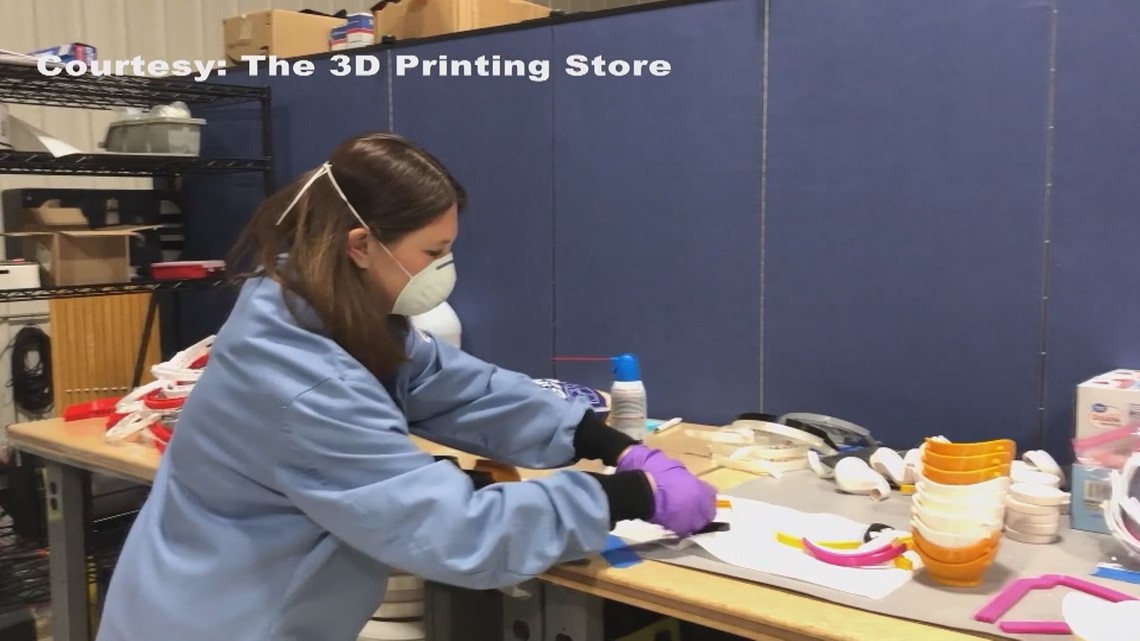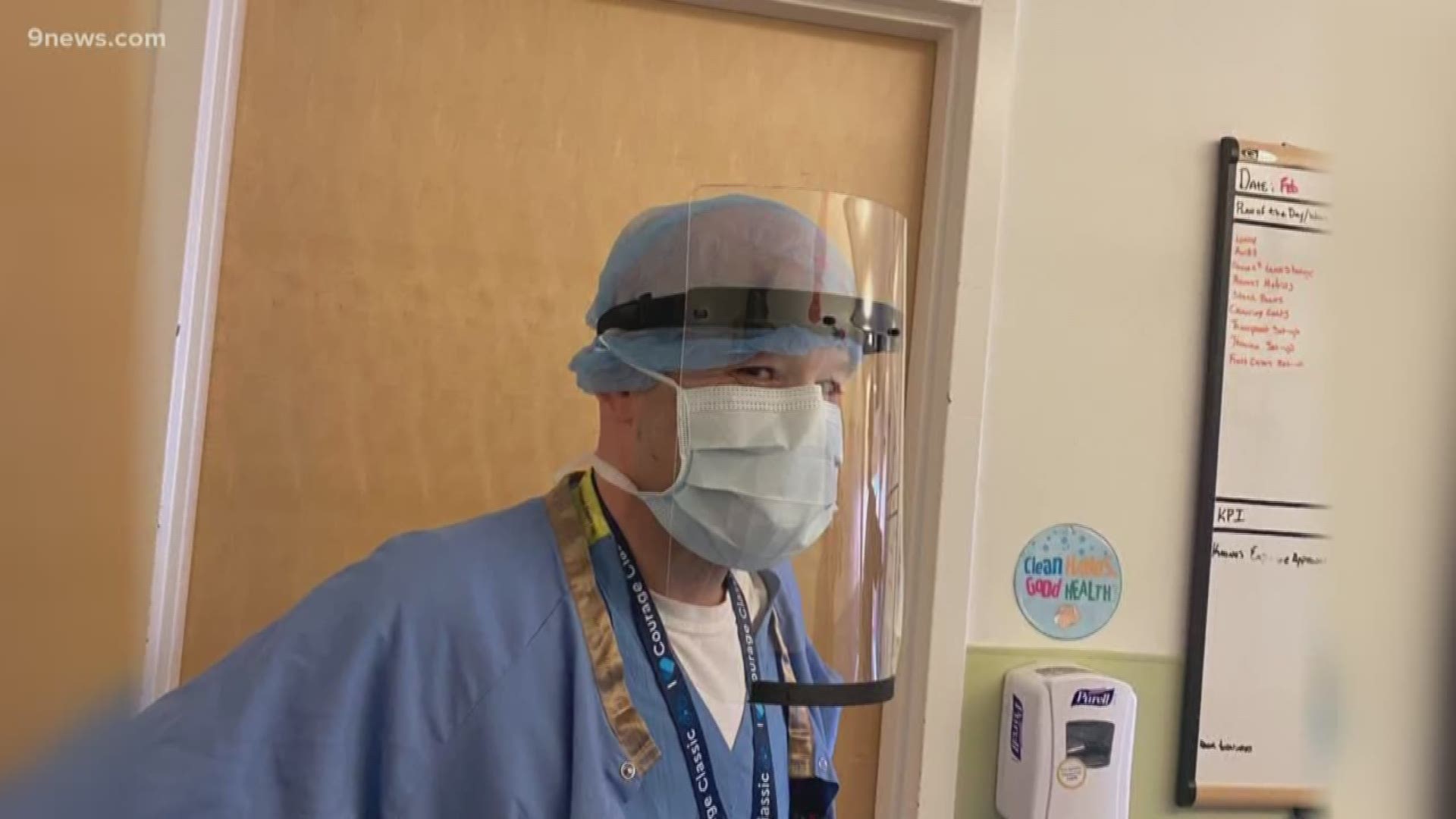DENVER — When Colorado’s Governor Jared Polis called on the state to come together to help solve the personal protective equipment (PPE) shortage, he suggested we all “get creative”.
“Our way of answering that call was to give people the space to channel that energy and move the amazing things they can build to the hospitals that really need them,” Lauren Hebert told 9NEWS.
Hebert is one of the lead organizers of what she calls the “Make4Covid community” that she and a friend, Andrew Henderson, formed just nine days ago.
“A bunch of doctors were requesting equipment from engineering departments at various schools around Colorado,” Hebert said. “[Andrew] had a group of ‘makers’ who were ready to begin to make equipment for hospitals, and he had this group of doctors with just this incredible, critical need. They were stuck on these long crazy email chains together trying to coordinate and I was like, 'you know what? We’ve got to give them a place to coordinate.”'


More than 700 “makers” have already signed up to be members of this community, and 1,000 people have requested to join.
“It’s a mix of do-it-yourself people, hobbyists and professionals who are gathering together and exploring what can be done,” Omar Soubra with Make4Covid said. “For example, we have teams at the Centennial Airport right now. Instead of manufacturing aerospace or airplane parts, they’re basically printing face shield masks [with 3D printers].”
Medical shield masks are what Make4Covid is focusing on right now. Normally this equipment is used in conjunction with other forms of PPE to help keep the facial area protected from splashes, sprays and spatter of body fluids, according to the National Institutes of Health.
“There’s a critical need, particularly in rural hospitals,” Hebert said. “We’re working with 43 rural hospitals who need these face shields desperately so it’s our real call to action to the maker community right now.”


Make4Covid comes up with standard operating procedures to give to their partners who use their skills to do their part, whether it be using a 3D printer or sewing.
Right now, everyone is working on a volunteer basis, with donations going towards materials if a business needs them.
“The whole supply chain is really broken,” Hebert said. “We’re trying to get materials around to people who are really struggling to get them. But as soon as they have them in hand, they can really jump in and make an impact.”
So far, Hebert said they’ve made hundreds of face shields, but they’re hoping to ramp it up to thousands this week.
“We’re exploring a variety of options in terms of what else we can manufacture,” Hebert said. “I’m looking into the regulations around all of those things [like face masks and ventilators]. For us, it’s just absolutely critical that we comply with all of the safety protocols out there.”
In the meantime, they are looking for donations and more makers.
“Being a maker doesn’t necessarily mean having a 3D printer,” Hebert said. “You might also be a sewer, and we’re going to need help from folks like that. There are lots of people in the crafter community who can jump in and help us, and the truth is we are all makers in some way, and we need folks who have that maker mindset and are willing to just jump in.”
SUGGESTED VIDEOS | Feature stories

